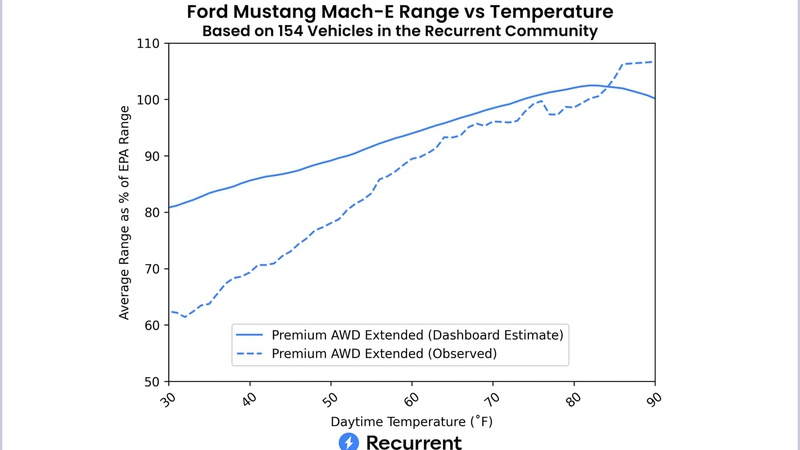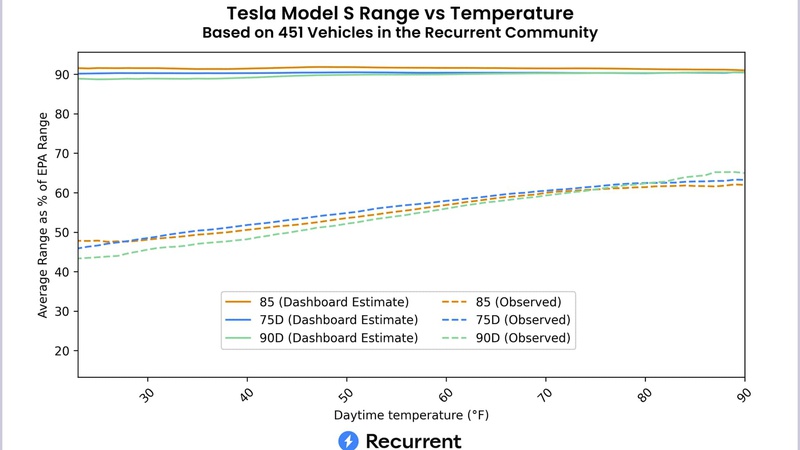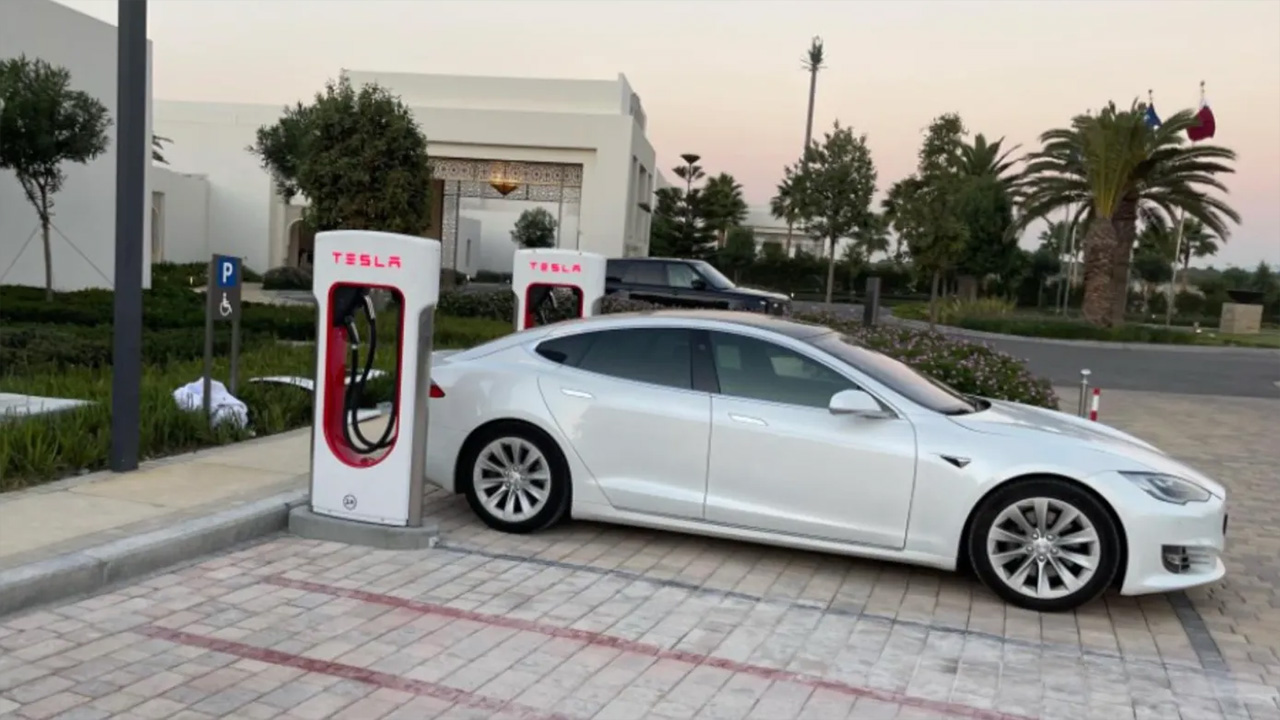A study conducted by Recurrent Auto, a car trading and research company, analyzed data from thousands of active Teslas and found that the range displayed on the gauge cluster does not account for the impact of temperature and driving patterns.
In temperatures less than 30 degrees Fahrenheit (-1.11 degrees Celsius), the Tesla Model Y had an average range of roughly 45 percent of the EPA estimate. In warmer temperatures, between 70 - 90F (21.11 - 32.22 °C), the range improved, retaining over 60 percent of the EPA estimate. This data was based on 3,332 vehicles.
Data from the Model S generated similar results. In colder temperatures, the electric sedan lost over 50 percent range, but in warmer climates, it retained about 60 percent of the charge.




Recurrent Auto Range Data
In a separate test, Recurrent co-founder and CEO Scott Chase found that the maximum range on his 2021 Model Y with an EPA range of 326 miles was only 252 miles during warm months between June and September, in Minneapolis. In December and January, the maximum range was as low as 188 miles, and 196 miles, respectively.
The average gap between the dashboard estimate and observed range appeared comparatively lower on the Chevrolet Bolt EV but high on the Ford Mustang Mach-e.
In a statement, Chase said, “They (EV owners) know their range drops in the heat and cold, but they don’t see that on their car’s dashboard. The reality is that the laws of physics apply to Tesla, too – Tesla is not much different than other automakers.”
Source: Insideevs

